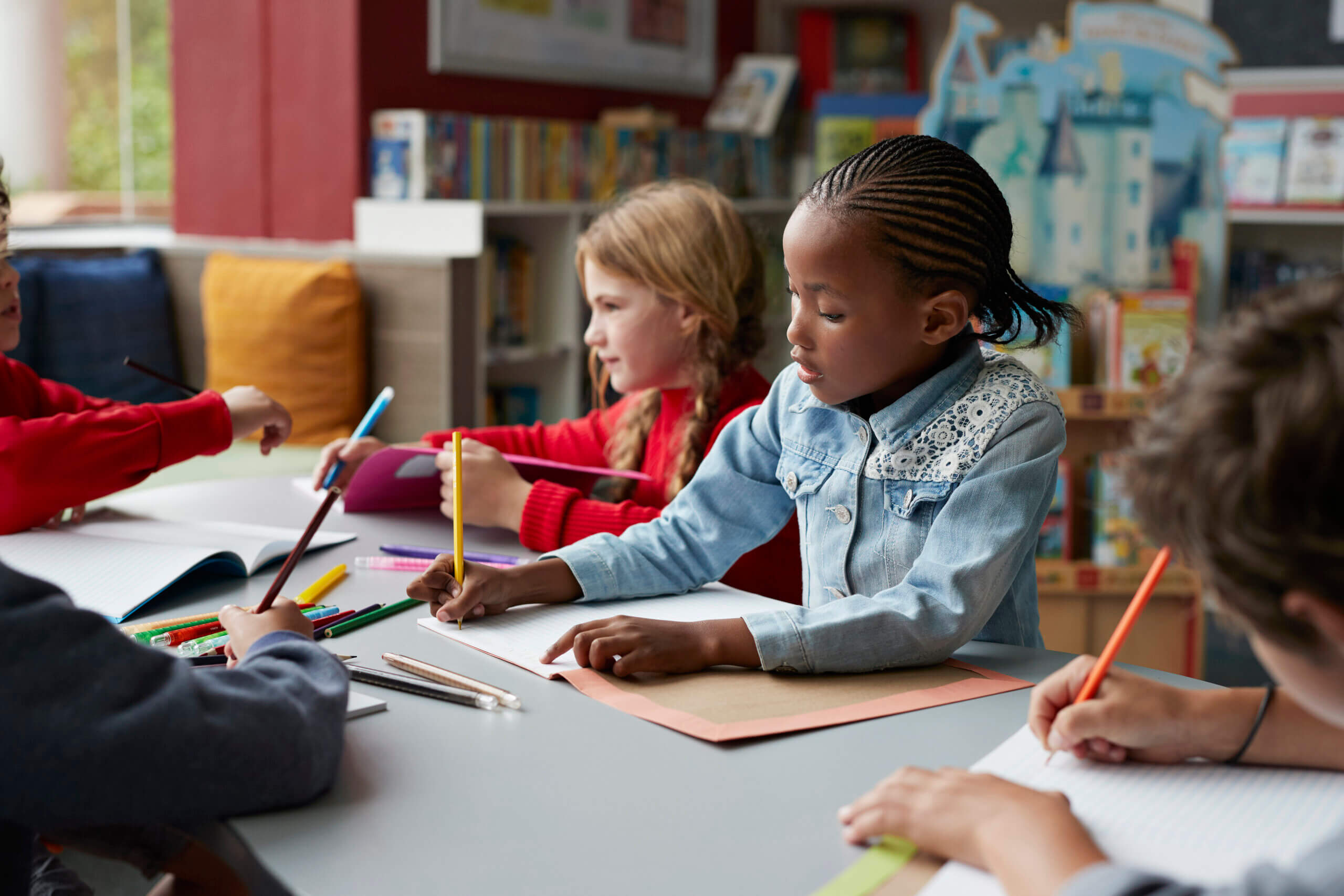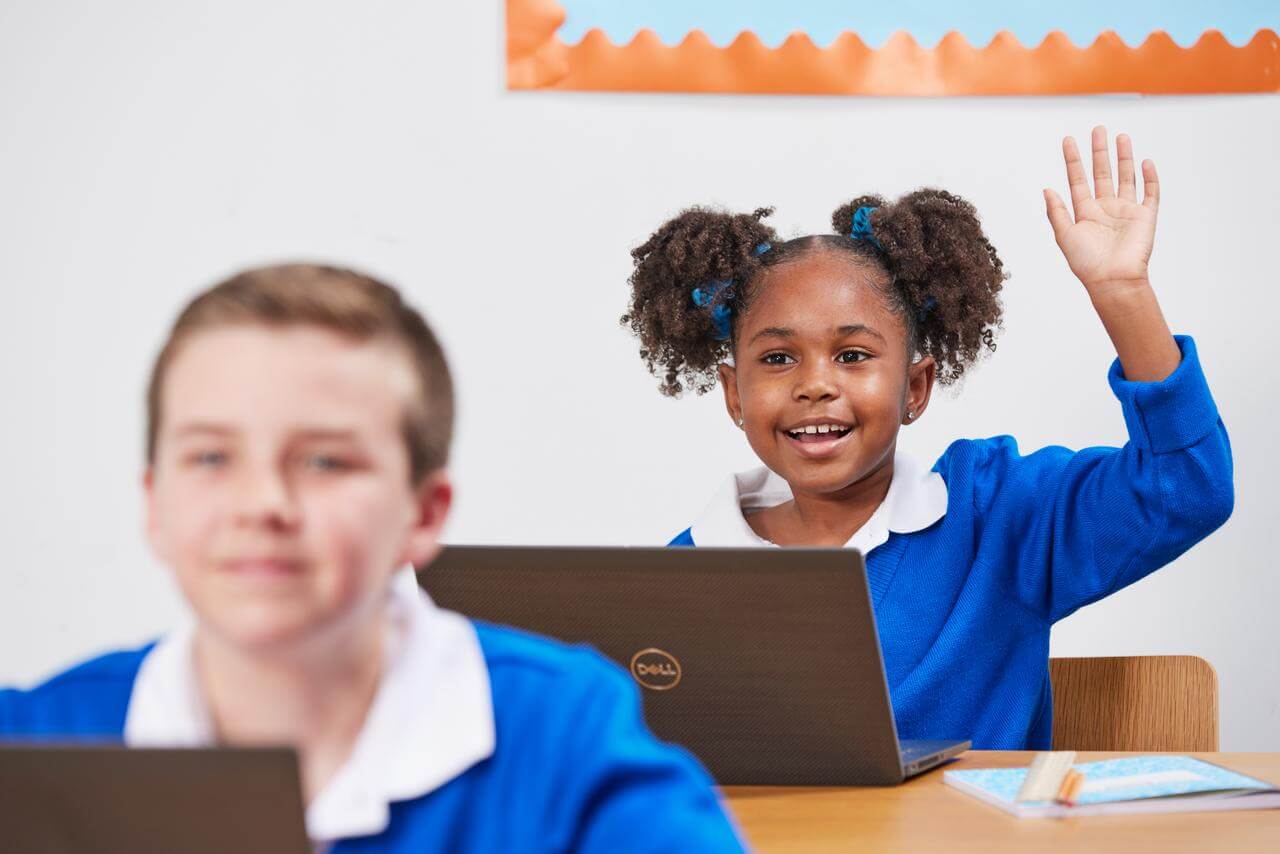Published on December 14th, 2021
How interactive whiteboards can help with different learning styles
12 minute read

Every student is different.
The way they engage, create, absorb information and, fundamentally, learn is one of the main things that sets students apart from one another in the classroom. This is one of the main obstacles for teachers, with a need for diverse lesson types and teaching styles for even the smallest classes.
Creating engaging lesson plans suitable for multiple learning styles is key to engaging with all of your students.
Bringing your classroom up to date with the latest technology is one of the best ways you can do this, and using an interactive whiteboard complete with educational software opens up a number of new opportunities for all types of learners. We’re going to cover everything you need to know about the different learning styles, from visual through to logical, and how you can use your interactive whiteboard for each of them.
What are the different learning styles?
Everyone learns in a different way. For many it’s as simple as reading from a book or watching a demonstration, but for others it can be more complex. It’s incredibly rare that a student has one singular preferred learning style and generally they’ll have a crossover of a number different styles. Remember, every student is different, so it’s important to have lessons and educational programs that are approachable for all learning preferences in your toolbox.
Many students prefer learning with sound, some with the written word, others with numbers, diagrams or a study group. There are currently seven different learning styles, these are:
Aural learners
Aural learners are those who benefit from audible stimuli, whether that’s music, speech or just general sound. Many auditory learners have a good sense of rhythm, learn well when they pair music with learning and generally absorb a teacher’s words better than other styles. Aural learners are often referred to as musical learners
Kinesthetic learners
Physical learners are those who really need to get hands on in their learning. Essentially, kinesthetic learners are best off touching objects, being active and exploring new subject matter through physically engaging activities. Physical learners include people who may enjoy sports, drama or practical crafts, making it quite a varied learning style. Physical learning is essential for helping develop spatial understanding.
Logical learners
A logical learner, or mathematical learner, is likely to approach new challenges through logic, reason and mathematics. They’ll look for relationships between ideas and learn by categorising, cataloguing and finding patterns. Look for flow charts, graphs and other logical systems to help these learners.
Social learners
Social learners thrive in group learning environments. They learn best when they can bounce ideas off of other students and thrive when they’re part of a group that’s working towards a common goal. Social learners can use either written or spoken words to learn, as long as it’s in a social environment.
Solitary learners
Solitary learners prefer to learn alone. They usually learn best when they have a chance to reflect, or think through a problem or task uninterrupted. They may be able to work with a group occasionally, but their best work and advancement will come when they have time to sit alone and work through a plan on their own.
Verbal learners
A verbal learner likes to speak or write their way through a problem. They use word problems, tongue twisters and other verbal challenges to help learn something new. A verbal learner can often learn best when they’re being dictated to, or when given texts to read from.
Visual learners
Visual learners are much more likely to be receptive to diagrams, images, videos and other visual cues. They’ll respond well to colour coding, drawing, graphs and visual aids in lessons. Consider incorporating these in where you can, even if a lesson is predominantly audio-led.
—–
Now that you understand the difference between the seven learning styles, it’s time to cover a number of teaching techniques for interactive whiteboards to help you plan the best possible learning experience for each style. These different learning styles can lean on a variety of apps and functions from your interactive displays.
How interactive whiteboards help visual learners
As images, diagrams and other visual prompts are so important for visual learners, an interactive whiteboard is a real asset to lessons. As a teacher can use an interactive whiteboard to bring up a series of diagrams, images and videos as well as apps, interactive games and simple annotations, it can play an important role in the classroom for visual learners. It’s a simple way to really improve your lesson and make it more accessible for a visual learner.
Physical activities for kinesthetic learners
While an interactive whiteboard may not feel like the most obvious boon for physical learners, those who thrive on hands-on learning and touch, it does offer something a simple spoken word or video cannot.
Interactive whiteboards often come complete with apps and games that allow students to get truly hands-on with the learning process. You can have students interact with the whiteboard from their workstations, come up to the front of the class and annotate the whiteboard or play a number of learning games.
Alternatively you can use the interactive whiteboard to enhance your lesson, by displaying things you may not have been able to without it, like experiments or similar. If these are interactive, then even better! Let your students have a go.
Using sound for aural learners
Aural learners are often fairly well served in the classroom already, but while many of these learners thrive from simply listening to a teacher talk through a problem, others may not. An interactive whiteboard can add a number of different auditory stimuli to a lesson. It could be as simple as playing background music through a lesson to help students engage or as complex as syncing up your lesson to audio cues designed to match key aspects of your class.
Use your whiteboard to help them put together rhymes, music or jingles around the work you’re teaching. There are a number of apps available to help you do just that.
Bring social learners together
An interactive whiteboard can form the hub of any group study activities or encourage people to socially interact with a wider lesson. They allow students to work together on tasks either remotely from their workstation, or as a group at the front of the class with the whiteboard. You can set a series of challenges that rely on group discussions or problem solving to help interpersonal learners develop their skills.
Why not try a group task that relies on them working together to solve a problem where they have to show their workings or else work through a series of problems on the whiteboard? There are apps and games designed specifically to do this.
Give solitary learners the space they need to thrive
An interactive whiteboard may not feel like the logical prop for a solitary learner, but you’d be surprised how empowering it can be. An interactive whiteboard can be used to simply provide a class with written assignments or a workflow while they get on with their own learning.
Alternatively you can have students work alone and submit work to an interactive whiteboard, either as part of a quiz or a wider task. This way lets a solitary learner work to their best ability but still be involved in interactive elements of your lessons.
Speak your verbal learners’ language
A verbal learner is keen to both listen and speak themselves – whether that’s out loud or in writing. An interactive whiteboard is perfect for this.
Invite verbal learners to the front and get them to annotate on the whiteboard as they go, or play word games with the whole class. Interactive whiteboards can be used in conjunction with educational software to access a library of poetry, word games and a whole host of other resources perfect for verbal learners.
Bring structure to logical learners
An interactive whiteboard is the perfect tool for logical learners. It provides access to numerous interactive mathematics games and logic puzzles and can also be used by students to create flow charts or diagrams.
Access customisable science experiments and let your logical thinkers play around with the variables. An interactive whiteboard is invaluable for helping students map out their work. The Promethean ActivPanel interactive display is perfect for drawing out logical diagrams and puzzles.
Get the most out of your class with interactive whiteboards and software
Whatever way you want to teach your students, keeping them involved in the process is important. When your students come to a classroom and feel like an active participant, it’s only going to help. Promethean creates world leading interactive displays designed with the classroom in mind. Not only that, but we set the standard on educational software to help you get the most out of your smart technology. Interested in learning more? Visit the virtual demo page to request a live demo of the Promethean interactive display.
If you have enjoyed this guide, why not check out some of our other expert interactive whiteboard resources.




